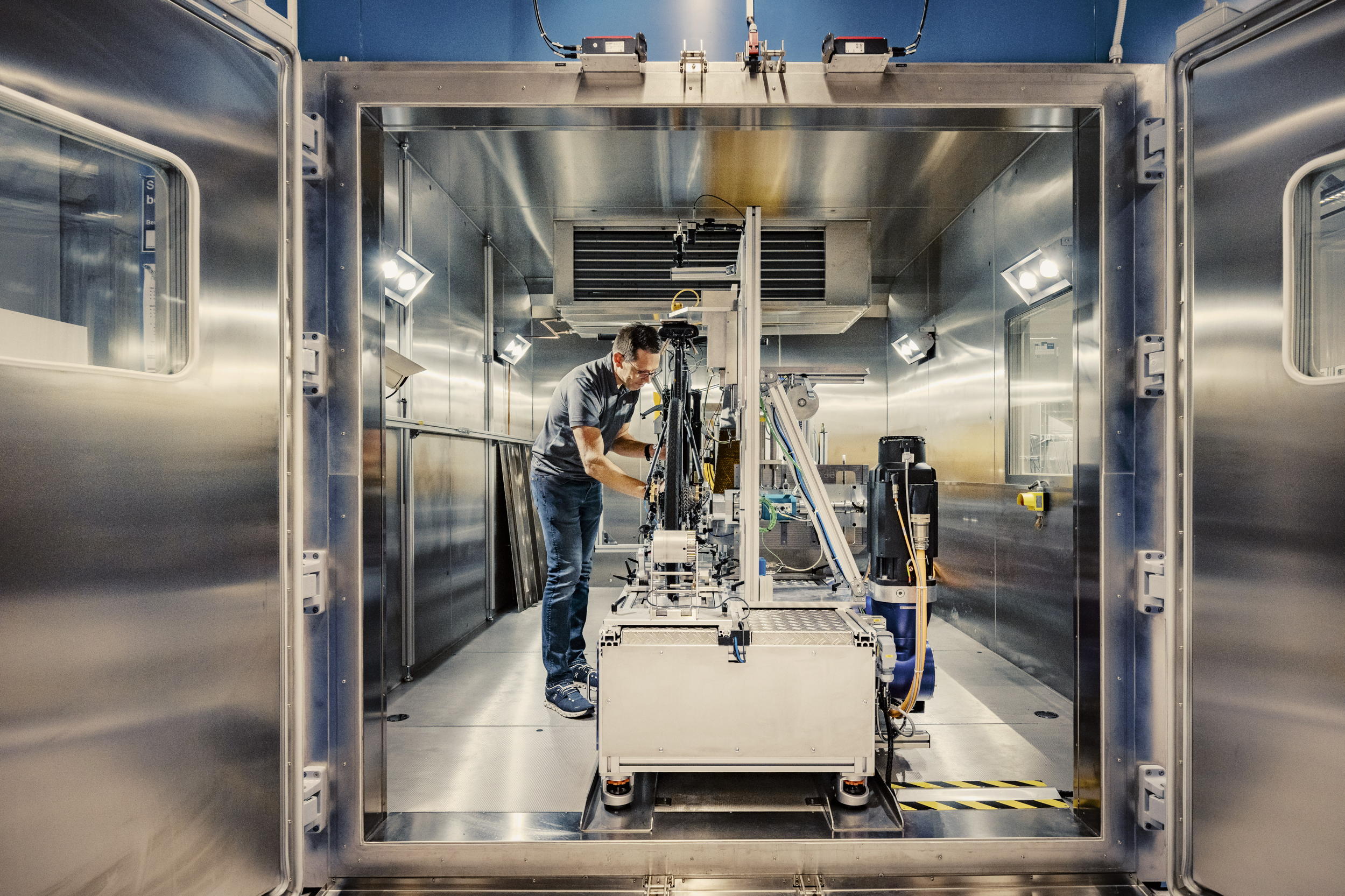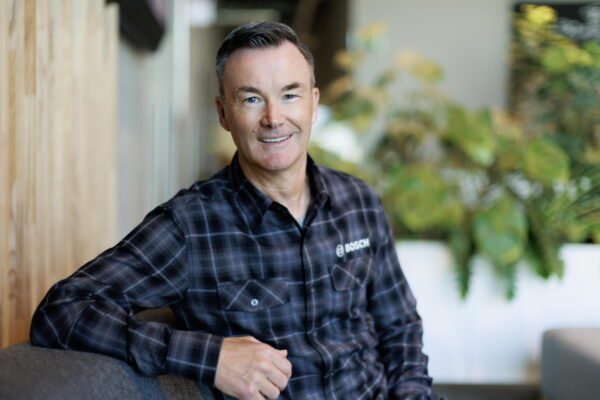We sat down for an interview with Bosch eBike Systems CEO, Claus Fleischer, to talk about reliability, serviceability, and that 250W maximum rated power regulation.
Recently I visited the Bosch eCampus to ride the new Performance CX motor – Bosch’s flagship e-bike product, a benchmark motor among its rivals, and a drive unit fitted to many of the best electric mountain bikes on the market. This is where the German giant develops all its e-bike products, with a huge lab area including testing machines for battery cells, motors, and complete bikes, including a vast acoustic area, IP machines for waterproofing, dynos, durability rigs and countless other torture testing devices. There’s even a full outdoor test loop with a climb, descent, jumps, features, and a variety of different trail surfaces. It’s an impressive facility that underlines Bosch’s investment and intent in the e-bike market.

The Bosch eBike Systems HQ is quite something. This is just the fancy public-facing part – there are underground testing labs and multiple additional buildings on the eCampus.
You can read what I thought of the new Bosch Performance CX motor here, and check out five recently launched e-bikes with it fitted here. We’ve also got a first ride review of the new Santa Cruz Vala with Bosch CX motor here.
While at the headquarters I had the opportunity for a short interview with Claus Fleischer, the CEO of Bosch eBike Systems. Claus is a genuine e-bike enthusiast, not just a suit. He’s been at the helm of Bosch’s e-bike development for over ten years, and loves to ride, recently completing the EMTB Transalp event across the alps. Here’s what he had to say.

Bosch eBike Systems CEO Claus Fleischer (right) walks the walk as well as he talks the talk. Here with ‘Uphill Flow’ specialist, Stefan Schlie (left).
MBR: There are a lot more sensors on the new CX motor. Does that mean that there’s more to go wrong?
CF: I wouldn’t say so because having sensors in a system, in a drive unit, is state of the art. We know how to do this. Torque and cadence sensors have been in motors forever. Inertia sensors have been in cars and motorbikes forever. Inertia sensors; that’s not rocket science, we know how to do this. That’s the core competency of the Bosch Group. We know what we’re doing!

The outdoor test track at the Bosch eCampus HQ is quite something.
MBR: One of the number one concerns for mountain bikers is reliability. How does the new CX motor address these concerns?
CF: Oh very much because we were focusing on the weak spots and field returns, and over the years we’ve got more robust when it comes to use and use cases, especially when it comes to environmental and water and dirt. So we have improved over the years heavily our sealing systems – the static sealing, the dynamic sealing – including also reducing the friction. You should feel when you ride it that there is no resistance when you’re pedalling without motor, or above the speed limit. And our quality numbers speak for themselves. We have best-in-class quality, also if you ask the dealers, the dealer survey. Because we are testing a lot ourselves in real life, so I can see durability is a major concern and this has always been a focus especially for the CX, because it’s being used in rough environments, and we love rough environments!

A physical timeline of Bosch e-bike development, from the earliest prototype in 2009.
MBR: Does that extend into serviceability as well?
CF: What we do is that we provide spare parts, we provide also remanufacturing, where we take parts back from the field, from the dealers, we refurbish them, we bring them back to life as spare parts. Some drive units we have repair kits when it comes to sealings and bearings and this will continue as part of the circular economy.

The vast acoustic chamber for tuning the noise of the motors. Behind the ramp is a smaller acoustic chamber straight out of a sci-fi movie.
MBR: The EU motor regulations are specifically around 250 watt continuous power. There is some confusion because motor brands exceed this with their peak power. Let’s say a motor could easily produce 300 watts for a long very long period of time consistently. How is this allowed?
CF: This goes all back to the regulations and one is the regulation for e-pecs (pedelecs, pedal-assist bikes) and the other one is the machinery directive. And that there is a definition of the equivalent to a rated power compared to a human being, so your biological pedal input. And this was a rated power of 250 watts, which you can endure for a long time. Then, 20 or 25 years ago, they tried to provide for a consumer a baseline where they would guarantee 250 watts over a lifespan (of the motor). And the idea if you guarantee a rated power is that you shall never have less. But then they put in the term ‘maximum’, which is the contradiction to the term ‘rated power’. The idea as a consumer promise. I promise to you for a long time 250 watts. And then they limited it.

This dyno lets Bosch test complete bikes in a temperature-controlled environment.
So from the compliance with a regulation, there is a definition of the test setup, and we all comply with that. Because if you are longer in that performance range with all the losses and the temperature, you also have a durability issue. Because you shall not overheat your system. So everyone is complying with the way the test is defined. With that it allows more peak power, also more peak power over a certain time, but then due to the efficiency and the losses, you have to reduce power output or your temperature will increase to infinity. So it’s maybe a contradiction on first glance, but if you dig in deeper as a technician with the labs, then with the power definition, and the weight level, where we are all, it makes sense.

A specially-formulated grind paste was developed to test sealing of the motors. It’s a secret recipe, sorry!
MBR: OK, so no one’s gonna get taken to court?
CF: No, and if you want to increase the peak power even further and having a thermal stability, you have to increase weight again. Which is the trade-off. Weight and maximum power and rated power – that’s a trade-off. Now everyone is reducing weight, which is good. With that is the natural limit of increasing power. That’s a good trend.




